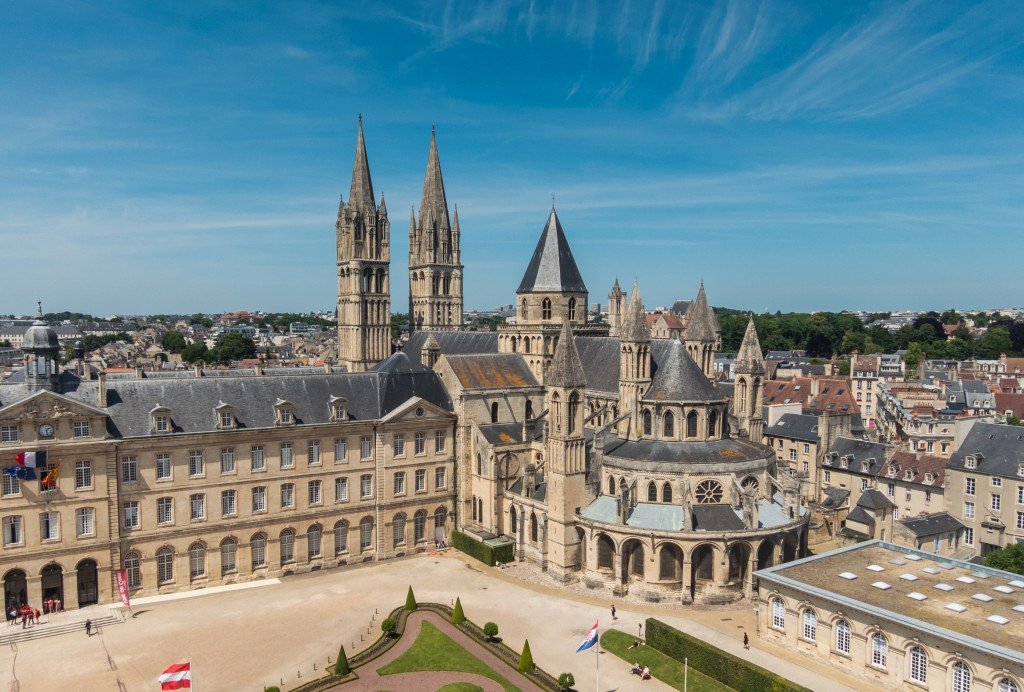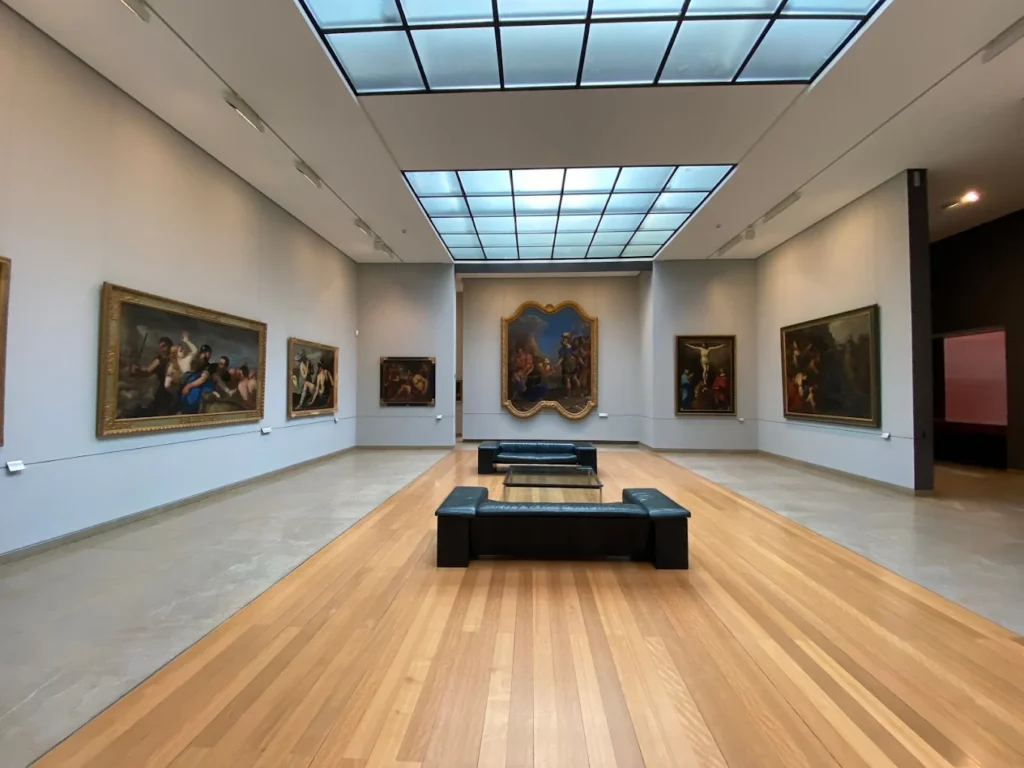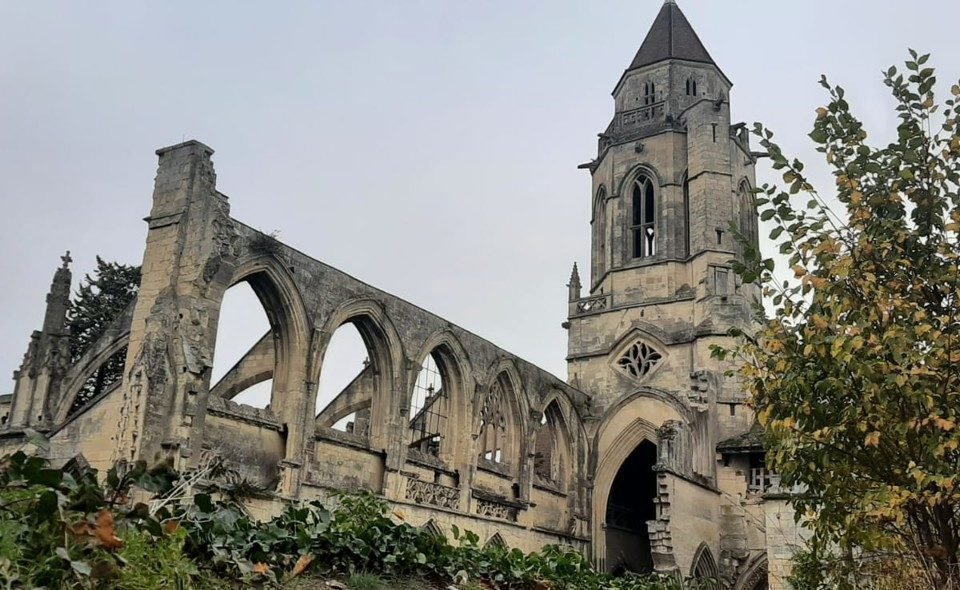Caen is a charming city with impressive architecture and a rich history. The most admired attraction in Caen is the castle, a massive fortress with impressive walls, and inside it is the Museum of Normandy and the castle towers provide panoramic views of the city.
For history buffs, a visit to the Abbaye aux Hommes and Abbaye aux Dames is a must. These magnificent Romanesque abbeys were founded by William the Conqueror and his wife Matilda.

Meanwhile, the Caen Museum of Fine Arts has a wonderful collection of European paintings spanning many centuries. The city’s green oases include the Jardin des Plantes with its lovely botanical exhibitions and the Parc Michel d’Ornano, where you can relax by the lake. Caen comes alive with a vibrant nightlife. From bars serving local ciders to lively music venues hosting live concerts, there’s something for everyone.
Location
Caen located in the heart of Normandy, just 15 minutes from the cross-Channel ferry port of Ouistreham and two hours from Paris. Caen is the capital and largest city of the Calvados department in Normandy.
Pegasus Bridge

Pegasus Bridge (called the Bénouville Bridge after the neighbouring village) is a road crossing over the Caen Canal, between Caen and Ouistreham in Normandy. The original bridge, built in 1934, is now a war memorial and is the centrepiece of the Memorial Pegasus museum at nearby Ranville.
The Caen Memorial in CAEN (Le Mémorial de Caen à CAEN)


The Caen Memorial takes you back to 1939, to an area dedicated to World War II. The tour showcases period costumes, photographs and objects, while films immerse us in history… In front of you, a moving photograph and a globe represent the borders invented by Germany in 1943.
Visit the landing room to learn all about the Battle of Normandy. Take the opportunity to watch the D-Day film “The Battle of Normandy: 100 Days That Changed the World”. As you pass through the Gardens of Remembrance, descend into General Richter’s underground bunker to relive the last moments of the German commander and his comrades-in-arms.
St Peter’s Catholic Church

The Church of Saint-Pierre is a Roman Catholic Church dedicated to St. Peter. The church was originally built between the 13th and the 14th centuries. The beautiful building is the chief church of the town, and is situated towards the center of the city, occupying an entire block. The site is famous for its 75-meter-long tower and soaring spire.
Caen Castle

Caen Castle (Château de Caen) lies in the center of the city. Castle was first built around 1060 by William the Conqueror on a hillock next to the town of Caen. It was equipped with two entrance gates; the Town Gate and the Land Gate, both with barbicans. With an area of 5.5 hectares, it is one of the larger castles in Western Europe.
Abbaye-aux-Hommes

This former Benedictine abbey was founded in 1063 by William the Conqueror, and it is in the church of Saint Stephen that he rests, in his tomb, according to his wishes. After the French Revolution, the buildings became a high school and, during the bombings, a refuge for civilians. In 1965, the town hall officially moved into the premises.
Abbaye aux Dames de Caen

The Abbaye aux Dames was founded in 1060 by Matilda, William the Conqueror’s wife, and consecrated on June 18th, 1066. The abbey, a masterpiece of Norman Romanesque art, together with the 18th century convent and the French-style garden form a stunning ensemble.
Museum of Fine Arts

Fine Arts Museum (The Musée des Beaux-Artsis) on the grounds of the Caen Castle. The permanent collection is known for its 16th and 17th century European paintings, particularly by French, Italian, and Dutch masters.It also includes works from the 18th century and later. Special exhibitions may feature modern artists.
Caen Theatre


The Caen Theatre stands out for its unique project in France: a stage open to all genres of live performance (opera, musical theater, dance, new circus, theater, concerts, etc.), with opera as the headline act. Committed to rare titles from the repertoire as well as its masterpieces, to young talents as well as to the great names of the current scene, at the intersection of genres and universes.
Church of Saint-Étienne-le-Vieux

Located next to the Abbaye aux Hommes in Caen are the handsome ruins of St-Etienne-le-Vieux (Old St. Stephen’s), a large medieval church destroyed in World War II.
Old St. Stephen’s Church has been left in ruins, which make for a handsome and intriguing sight near the Abbaye aux Hommes. The nave and south aisle are completely gone, but the north aisle, transept and crossing tower still stand.
